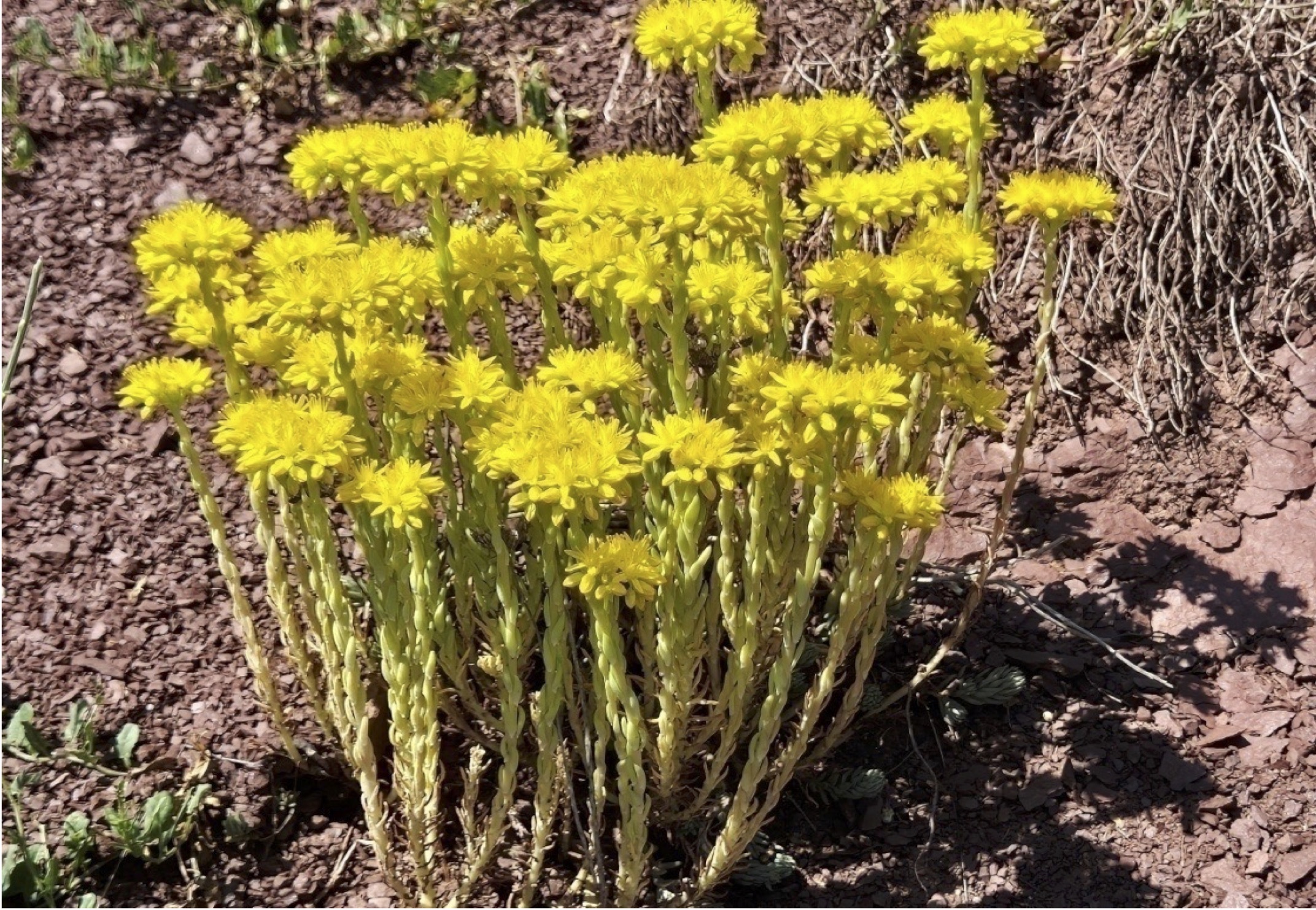Petrosedum thartii (Crassulaceae), an overlooked species of the Iberian flora
DOI:
https://doi.org/10.24310/abm.50.2025.20732Keywords:
Pyrenees, Spain, distribution, flora, Sempervivoideae, SedumAbstract
We report here the presence in the Pyrenees of plants assignable to Petrosedum thartii based on current knowledge of the difficult yellow-flowered Petrosedum complex. Petrosedum thartii has not previously been reported from the Iberian Peninsula and the nearest known locations are in the Alps. However, this plant is quite common in the inland valleys of the south-eastern Pyrenees but has seemingly often been confused with P. rupestre, a widespread species in this area whose presence has only been confirmed in areas with a maritime influence in eastern Catalonia. Our observations also indicate that confusion between P. montanum and P. rupestre is common, which suggests that an updating of the distribution of the yellow-flowered Petrosedum species in the Pyrenees is required.
Downloads
Metrics
References
Arana, M.D., Gallo, L., Oggero, A.J. & Sieburger, I. (2014). Remarks on Sedum thartii (Crassulaceae), an exotic
species naturalized in Argentina. Webbia, 169, 141-144. https://doi.org/10.1080/00837792.2014.893604
Atlas Flora Pirineos (2024). http://florapirineos.ipe.csic.es. Accessed on 9 February 2025.
Castroviejo, S. & Velayos, M. (1997). Sedum L. In Castroviejo, S., Aedo, C., Laínz, M., Morales, R., Muñoz, F., Nieto,
G. & Paiva, J. (Eds.), Flora iberica, Vol. V. Ebenaceae-Saxifragaceae (pp. 121-153). Madrid: Real Jardín
Botánico-CSIC.
Font, J. (2000). Estudis botànics de la Serra de l’Albera. Catàleg florístic general i poblament vegetal de les Basses
de l’Albera. Ph. D. Thesis. Universitat de Girona.
Franquesa, T. (1995). El paisatge vegetal de la Península del Cap de Creus. Arxius de la Secció de Ciències, 109.
Institut d’Estudis Catalans.
Gallo, L. (2009). Sedum ser. Rupestria Berger (Crassulaceae): work in progress toward a checklist of taxa and their
distribution. Bocconea, 23, 203-205. Proceedings of the Optima Meeting. Pisa, 10-16 September 2007.
Gallo, L. (2012). Natural hybrids in Sedum series Rupestria Berger (Crassulaceae): a review of taxonomy and
nomenclature. Forum Geobotanicum, 6, 1-13. https://doi.org/10.3264/FG.2012.0710
Gallo, L. (2014). Euro+Med-Checklist Notulae, 3: Sedum thartii. Willdenowia, 44, 291.
Gallo, L. (2017). Crassulaceae. In Pignatti, S., Guarino, S. & La Rosa, M. (Eds.), Flora d’Italia, Vol. I, 2ª ed. (pp. 915-
. Milano: Edagricole.
Gallo, L. & Zika, P.F. (2014). A taxonomic study of Sedum series Rupestria (Crassulaceae) naturalized in North
America. Phytotaxa, 175,19-28. https://doi.org/10.11646/phytotaxa.175.1.2
Hart, H.’t (1978). Biosystematic studies in the Acre-group and the series Rupestria Berger of the genus Sedum L.
(Crassulaceae). Ph. D. Thesis. Utrecht University.
Messerschmid, T.F.E., Klein, J.T., Kadereit, G. & Kadereit, J.W. (2020). Linnaeus’s folly – phylogeny, evolution and
classification of Sedum (Crassulaceae) and Crassulaceae subfamily Sempervivoideae. Taxon, 69, 892-926.
https://doi.org/10.1002/tax.12316
Morawetz, V. (2008). Ökomorphologie heimischer Sedeae (Crassulaceae) Ein Beitrag zur Lebensgeschichte.
Neilrechia, 5, 181-198.
Niederle, J. (2016). Co je doopravdy Sedum rupestre 2 (s opravami). Skalničkářův rok, 74, 19-40.
Nikulin, V.Y., Gontcharova, S.B., Stephenson, R. & Gontcharov, A.A. (2016). Phylogenetic relationships between
Sedum L. and related genera (Crassulaceae) based on ITS rDNA sequence comparisons. Flora, 224, 218-229.
https://doi.org/10.1016/j.flora.2016.08.003
POWO (2024). Plants of the World Online: Petrosedum.
https://powo.science.kew.org/taxon/urn:lsid:ipni.org:names:893404-1. Accessed on 9 February 2025.
Sáez, L., Pié, G. & Carnicero, P. (2017) Catàleg de la flora vascular del massís del Montseny. Sèrie Territori i Espais
Naturals, 1. Barcelona: Diputació de Barcelona.
Tela Botanica (2024). https://www.tela-botanica.org. Accessed on 9 February 2025.
Tison, J.M., Jauzein, P. & Michaud, P. (2014). Flore de la France meditérranéenne continentale. Turriers: Naturalia
Publications.

Published
How to Cite
Issue
Section
License
Copyright (c) 2025 Acta Botanica Malacitana

This work is licensed under a Creative Commons Attribution-NonCommercial-ShareAlike 4.0 International License.
All information related to the licensing of published works in Acta Botanica Malacitana and copyright can be found in our Editorial Policy.






1.png)
